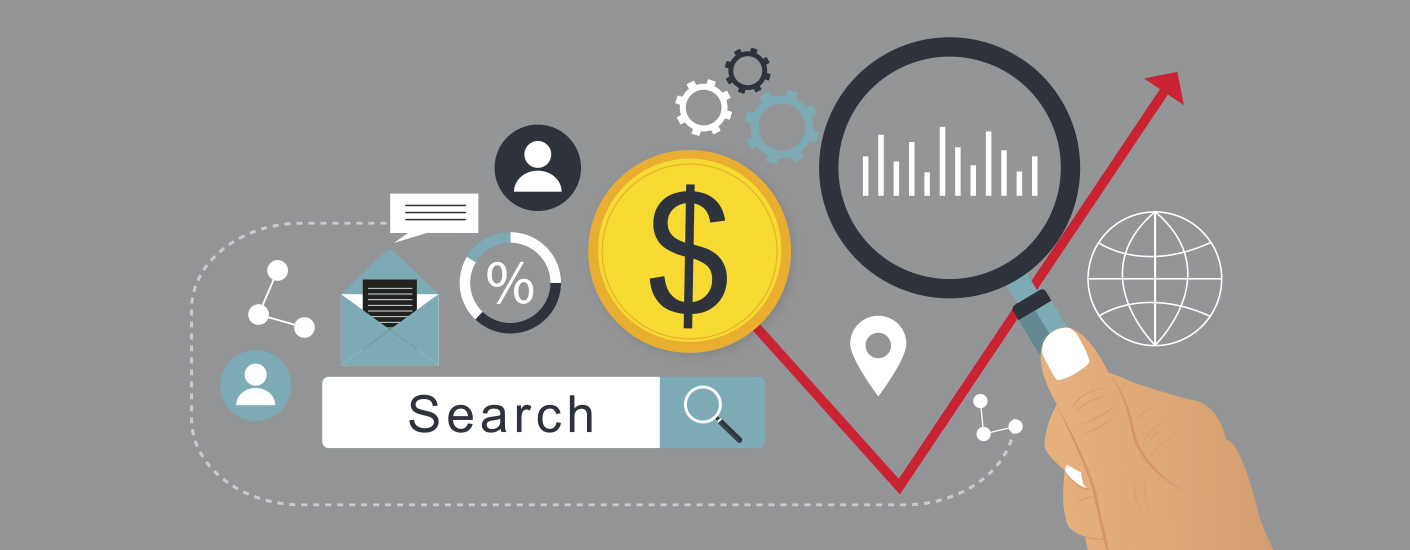
The digital landscape continues to evolve quickly. From Google’s AI-powered search experiences to tools like ChatGPT, users are changing how they interact with content. This shift leaves marketers asking: How and where should our content show up?
Paid Search is a Powerhouse
Despite changes, paid search advertising (Google and Bing Ads) remains one of the most effective and accessible digital marketing channels. Whether the goal is to generate leads, drive sales or boost local awareness, paid search drives measurable results—sometimes increasing visibility by as much as 80%. A recent study found that the average ROI for Google ads is 800%, or $8 for every $1 spent.
What makes paid search so powerful? User intent. When someone types into Google, “best office chair” or “moving companies near me,” they are already showing intent and are ready to click to buy.
But Wait, Isn’t AI killing Clicks?
It’s true that AI is changing the game. More users now find quick answers directly on search results pages, reducing traditional click-through rates. A study by Rand Fishkin found that 59% of searches now result in zero clicks.
But this doesn’t mean paid search is obsolete. In fact, AI is elevating the importance of having a smart, adaptive digital strategy, one that combines SEO and paid tactics to stay visible in evolving search environments.
How AI Is Enhancing Paid Search
Rather than disrupting paid search, AI is supercharging it, making campaigns smarter, faster and more effective:
Faster Campaign Set-up
One benefit of a paid search campaign is speed. Your business doesn’t have to wait months to climb the SEO ranks and appear organically. Instead, ads appear as soon as your campaign launches, which is helpful when rolling out new services, entering new markets or promoting time-sensitive offers. AI is taking set-up to the next level by rapidly analyzing data, identifying optimal keywords and assisting with copy variations.
Smarter Audience Targeting
While paid search already allows for granular targeting based on geography, demographics, audience behaviors and specific audience segments from first-party data, AI takes targeting to the next level. AI now analyzes large datasets – like user search history, online behavior and offline data – to pinpoint high-value audiences with even greater precision. This reduces wasted ad spend and gives marketers even more insight into which messages or offers convert best in different regions or audience segments.
Another strong feature of paid search campaigns is the ability to control spending down to the dollar. Campaigns can be paused, adjusted and scaled in real time based on performance without waiting for algorithms or long-form content to take effect.
Improved Organic Visibility
To help meet your audience where they are, start by making your website easier to discover in search results and keep AI in mind. This means writing helpful content and organizing your website clearly so users and algorithms can navigate it easily. AI-powered search engines like Google are increasingly reliant on structured data, the behind-the-scenes code that describes your content. By using structured data, you help AI better understand what’s on your page, increasing your chances of being displayed in enhanced formats like featured snippets, FAQs and star ratings.
AI is also changing user behavior: more people are finding what they need directly on the search engine results page (SERP), thanks to AI-generated summaries and instant answers. This means your organic content may take longer to drive traffic, as users engage less with individual websites. That’s where AI-enhanced paid search comes in. New AI tools make it easier to dynamically generate and optimize ad copy, refine targeting based on user behavior, and even predict which keywords will convert. These capabilities help you stay visible and competitive while you build out your longer-term, AI-friendly organic strategy.
What’s the winning strategy? Show up and show up well.
To stay competitive in this evolving landscape, marketers need a dual approach:
- Strong SEO to support long-term visibility and authority
- Paid search for immediate, targeted reach
Showing up where it matters means appearing in AI summaries, local map results and through paid search ads. By combining these strategies, marketers create multiple points for their customers, no matter how they search or what stage of the buying journey they’re in.
The digital landscape will only continue to evolve. Don’t just keep up; lead. At STIR, we build integrated strategies that help businesses stand out. Let’s talk about how we can help you show up—and lead—in this changing world. Reach out to STIR’s Digital Media Director, Maureen Breiner, at maureenb@stirstuff.com.




